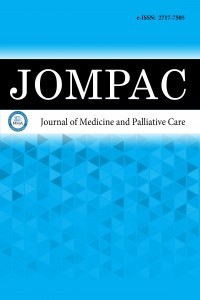1.
Rafsten L, Danielsson A, Sunnerhagen KS. Anxiety after stroke: a systematic review and meta-analysis. <em>J Rehabil Med</em>. 2018;28(50):769-778.
2.
Altınbaş K, Oral ET, Soysal A, Arpacı B. Poststroke depression. <em>J Clin Psy</em>. 2006;9(3):148-153.
3.
Chemerinski E, Robinson R. The neuropsychiatry of stroke. <em>Psychosomatics.</em> 2000;41(1):5-14.
4.
Flick CL. Stroke rehabilitation. 4. Stroke outcome and psychosocial consequences. <em>Arch Phys Med Rehabil.</em> 1999;80(5): 21-26.
5.
Jamil A, Csendes D, Gutlapalli SD, et al. Poststroke depression, an underrated clinical dilemma. <em>Cureus</em>. 2022;26;14(12):32948.
6.
Darrel A, Kuhl AE. The DSM-5: classification and criteria changes. <em>World Psychiatry.</em><span dir="RTL">2013;12(2):92-98.</span>
7.
Gilworth G, Phil M, Cert A, Sansam KA, Kent RM. Personal experiences of returning to work following stroke: an exploratory study. <em>Work</em>. 2009;34(1):95-103.
8.
Watanabe Y. Fear of falling among stroke survivors after discharge from inpatient rehabilitation. <em>Int J Rehabil Res</em>. 2005;28(2):149-152.
9.
Yang S, Chang MC. Poststroke pain. <em>Semin Neurol</em>. 2021;41(1):67-74.
10.
Aydemir Ö, Güvenir T, Küley L. Validity and reliability of Turkish version of hospital anxiety and depression scale. <em>Türk Psikiyatr. Derg</em>. 1997;8(4):280-287.
11.
Brunnstrom S. Motor testing procedures in hemiplegia: based on sequential recovery stages. <em>Phys Ther</em>. 1966;46(4):357-375.
12.
Dobkin BH, Plummer D, Amato P, et al. International randomized clinical trial, stroke inpatient rehabilitation with reinforcement of walking speed (SIRROWS), improves outcomes. <em>Neurorehabil Neural Repair</em>. 2010;24(3):235-242.
13.
Küçükdeveci AA, McKenna S, Kutlay S, Gürsel Y, Whalley D, Arasıl T. The development and psychometric assessment of the Turkish version of the nottingham health profile<em>. Int J Rehabil Res</em>. 2000;23(1):31-38.
14.
Frank AJ, Moll JM, Hort JF. A comparison of three ways of measuring pain. <em>Rheumatol Rehabil</em>. 1982;21(4):211-217.
15.
Chun HYY, Whiteley WN, Dennis MS, Mead GE, Carson AJ. Anxiety after stroke: the importance of subtyping.<em>Stroke.</em> 2018;49(3):556-564.
16.
Kong K, Yang S. Health-related quality of life among chronic stroke survivors attending a rehabilitation clinic. <em>Singapore Med J</em>. 2006;47(3):213-218.
17.
Ayis SA, Ayerbe L, Ashworth M, Wolfe CD. Evaluation of the hospital anxiety and depression scale (HADS) in screening stroke patients for symptoms: item response theory (IRT) analysis. <em>J Affect Disord</em>. 2018;228(1):33-40.
18.
Thayabaranathan T, Andrew NE, Stolwyk R, Lannin NA, Cadilhac DA. Comparing the EQ-5D-3L anxiety or depression domain to the hospital anxiety and depression scale to identify anxiety or depression after stroke. <em>Top Stroke Rehabil</em>. 2022;29(2):146-155.
19.
Knapp P, Dunn RA, Sahib N, et al. Frequency of anxiety after stroke: an updated systematic review and meta-analysis of observational studies. <em>Int J Stroke</em>. 2020;15(3):244-255.
20.
Guo J, Wang J, Sun W, Liu X. The advances of post-stroke depression: 2021 update<em>. J Neurol.</em> 2022;269(3):1236-1249.
21.
Chau JP, Lo SH, Zhao J, et al. Factors associated with post-stroke depression in Chinese stroke survivors. <em>J Stroke Cerebrovasc Dis</em>. 2021;30(11):106076.
22.
Astuti P, Kusnanto K, Novitasari F. Depression and functional disability in stroke patients. <em>J Public Health Res</em>. 2020;9(2):1835.
23.
Naess H, Lunde L, Brogger J. The effects of fatigue, pain, and depression on quality of life in ischemic stroke patients: the bergen stroke study. <em>Vasc Health Risk Manag</em>. 2012;8(1):407-413.
24.
Harrison RA, Field TS. Post stroke pain: identification, assessment, and therapy. <em>Cerebrovasc Dis</em>. 2015;39(3-4):190-201.
25.
Jönsson AC, Lindgren I, Hallström B, Norrving B, Lindgren A. Prevalence and intensity of pain after stroke: a population based study focusing on patients’ perspectives.<em>J Neurol Neurosurg Psychiatry</em>. 2006;77(5): 590-595.
26.
Klit H, Finnerup NB, Overvad K, Andersen G, Jensen TS. Pain following stroke: a population-based follow-up study. <em>PloS One.</em> 2011;6(11):27607.
27.
Şahin Onat Ş, Ünsal Delialioğlu S, Kulaklı F, Özel S. The effects of central post-stroke pain on quality of life and depression in patients with stroke<span dir="RTL">. </span><em>J Phys Ther Sci</em>. 2016;28(1):96-101.
28.
Payton H, Soundy A. The experience of post-stroke pain and the impact on quality of life: an integrative review. <em>Behav Sci.</em> 2020;10(8):128.

